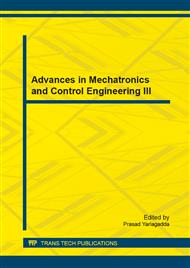p.305
p.309
p.313
p.318
p.325
p.333
p.338
p.343
p.352
An Optimization Design Method of Geometric Parameters of Skid Shoe Referring to Subject Weight of Marine Structures
Abstract:
The optimization design method of geometric parameters of skid shoe which is used to subject weight of marine structures is proposed. Considering skid shoe as steel frame structure, total weight and the bearing capacity of the skid shoe are selected as optimal objectives, and geometric parameters of the skid shoe are taken as design variables. Taking the strength, stiffness, local stability of the skid shoe as the constraint conditions, multi-objectives constraints optimization model of geometric parameters is established, and solved based on complex method. According to research results, a computer program has been developed using VC language. Then geometric optimum parameters of skid shoe in service of CNOOC are analyzed by the program. The results show that optimized design decreases steel volume, steel plate thickness by 28.7%, 18.4%, respectively, compared with original design. The optimization method has a series of advantages, such as simple model, fast calculating speed, high calculation accuracy.
Info:
Periodical:
Pages:
325-332
Citation:
Online since:
October 2014
Authors:
Price:
Сopyright:
© 2014 Trans Tech Publications Ltd. All Rights Reserved
Share:
Citation:


